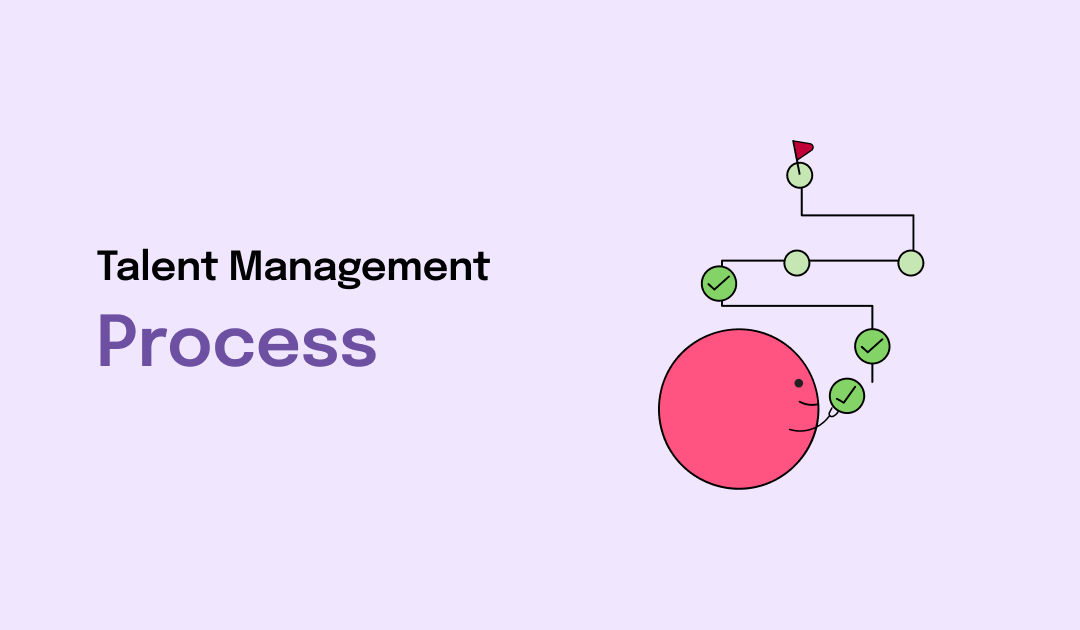In today’s ever-evolving corporate landscape, organizations are only as strong as the talent they nurture. Talent is no longer just about filling roles — it’s about aligning skills, potential, and purpose to business outcomes. That’s where a strong talent management process comes in.
In our experience working with organizations across sectors and sizes, we’ve observed that companies that invest in strategic talent management consistently outperform their peers in employee retention, productivity, and innovation. A well-executed talent management strategy doesn’t just boost employee morale; it builds resilient and future-ready organizations.
In this blog, we’ll take you through a comprehensive view of the steps in the talent management process, best practices, and how organizations can unlock their team’s full potential by aligning talent strategy with business goals.
What is Talent Management?
Table of Contents
At its core, talent management is the end-to-end process of attracting, developing, motivating, and retaining high-performing employees. It’s not just an HR function — it’s a strategic lever for growth.
Whether you’re looking at managing human talent within a large enterprise or scaling talent processes in a growing company, having a robust strategy in place is essential.
A few key aims of talent management strategy include:
- Aligning talent with organizational needs
- Driving employee development and performance
- Identifying and retaining high potential talent
- Building leadership pipelines
- Enhancing employee engagement and satisfaction
Why Does Talent Management Matter?
The world of work is undergoing a radical transformation. With increasing automation, hybrid work models, and changing employee expectations, people and talent management has taken center stage.
From our conversations with HR leaders, we’ve noticed that the most pressing challenge today is retaining top talent while ensuring employees are continuously learning and growing. Effective talent management strategies help bridge that gap by creating purposeful career journeys.
Moreover, strategic talent management also plays a pivotal role in:
- Strengthening organizational culture
- Fostering innovation and agility
- Supporting DEI goals
- Reducing hiring costs through internal mobility
The Key Stages of the Talent Management Process
Let’s walk through the steps of talent management that form the backbone of any successful strategy:
1. Planning and Strategy Development
This is the foundation of your strategic talent development plan. It involves:
- Workforce planning
- Identifying future skill requirements
- Aligning talent goals with business strategy
Here, HR teams and business leaders collaborate to develop talent strategies that support both current and future organizational needs.
Related Read: Talent Management Strategy: Best Practices for Developing and Retaining Top Talent in Your Organization
2. Talent Acquisition
Finding the right people is more than screening resumes. It’s about attracting individuals who align with your values, purpose, and long-term vision.
Effective talent acquisition includes:
- Employer branding
- Inclusive recruitment practices
- Robust onboarding processes
- Leveraging data and assessments to identify potential talent
The onboarding experience also plays a crucial role in employee retention — something we explore further in this blog on new manager onboarding.
3. Employee Development and Engagement
Once you’ve hired the right people, it’s about helping them grow. In our work with clients, we’ve seen how a clear focus on employee talent development drives engagement and business outcomes.
This stage involves:
- Learning & Development (L&D) initiatives
- Coaching and mentoring programs
- Talent engagement strategies
- Leadership development for emerging talent
- Building a growth mindset across the organization
Read more: The Journey of Developing New Managers: Steps to Success
4. Performance Management
This step focuses on tracking progress and ensuring alignment between individual goals and organizational outcomes. From employee feedback systems to 360-degree evaluations, performance management offers insights into potential growth areas.
Key components include:
- Goal setting
- Real-time feedback
- Continuous check-ins
- Performance reviews aligned with business strategy facilitation
5. Succession Planning and Leadership Pipelines
One of the most overlooked stages, succession planning ensures continuity and reduces the risks of leadership gaps. Companies with best talent management practices invest in identifying and nurturing high potential employees well in advance.
This involves:
- Identifying critical roles
- Mapping internal successors
- Offering targeted leadership development journeys
- Ensuring HR and talent functions collaborate with business teams
Check out: Leadership Development for New Managers: 10 Key Challenges
6. Retention and Culture Building
Retention isn’t about perks — it’s about purpose. Organizations that succeed in retaining talent in the workplace have:
- Strong internal communication
- Inclusive policies
- Purpose-driven work culture
- Career growth opportunities
In our experience, employee engagement and talent retention are deeply interconnected. When employees feel seen, supported, and challenged — they stay.
Key Principles of an Effective Talent Management Strategy
A strong HR talent strategy should be:
- Proactive – anticipating future needs rather than reacting to current gaps
- Personalized – one-size-fits-all doesn’t work anymore
- Data-driven – using insights to make informed decisions
- Integrated – aligned with overall business goals
- Employee-centric – putting people at the heart of the strategy
When HR and talent management functions operate in silos, the impact is diluted. Integration and collaboration are essential.
Best Practices We Recommend
Having worked with hundreds of organizations on talent strategy facilitation, we’ve compiled a few actionable takeaways:
- Regularly audit your talent management framework
- Use competency mapping to define success profiles
- Blend digital tools with human touch in employee development
- Use experiential learning formats to boost retention
- Measure the success of your high potential talent programs
- Train managers to be talent mentors, not just task allocators
- Linking Talent Management to Learning and Development
Related Read: Helping Employees Find Their True Potential: Aligning Strengths with Work That Matters
In the context of corporate learning and development, we believe that developing a talent management strategy goes hand-in-hand with building learning ecosystems.
Here’s how:
- Personalized learning paths aligned with career aspirations
- Leadership bootcamps to prepare future-ready talent
- Behavioral training to support employee adaptability
- Manager enablement sessions to encourage a culture of coaching
Explore more: Tips on HR Training for New Managers to Boost Engagement
A Note on Technology
Tools and platforms can enhance every stage of the talent management process, but they are not a substitute for strategy. Whether it’s using AI for assessments or a robust LMS for learning, digital solutions must be thoughtfully integrated.
Final Thoughts
Talent management is not just about HR — it’s a leadership priority. Organizations that plan a strategic talent management strategy are better equipped to face disruptions, scale rapidly, and build a culture of excellence.
In our work with clients across industries, we’ve seen firsthand how effective talent management strategies for organizational success can unlock extraordinary potential. It’s not just about retaining talent — it’s about igniting it.
As you reflect on your talent strategy, ask yourself:
- Are we investing enough in our people?
- Are our managers equipped to coach, not just manage?
- Are we building a culture that people want to stay and grow in?
If the answer isn’t a clear yes, it might be time to revisit your approach.










